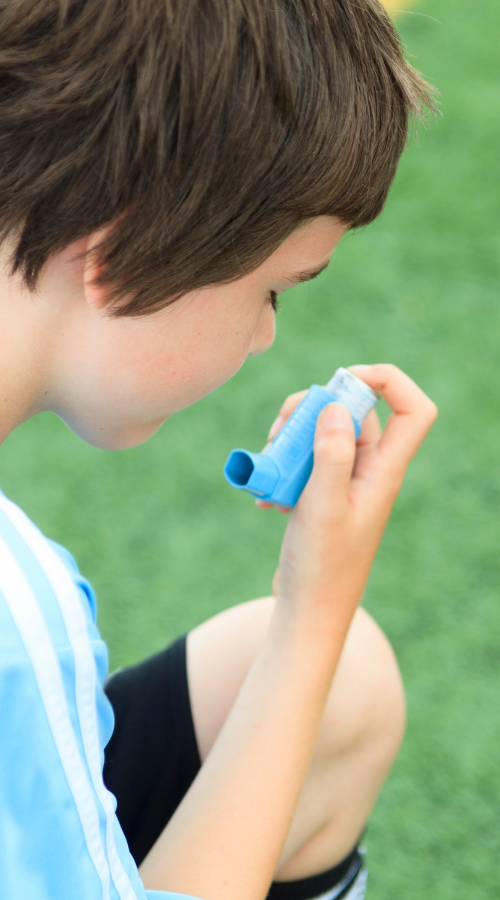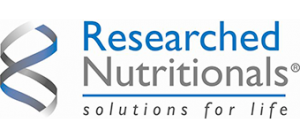For the past several decades there has been a significant increase in allergies ranging from food reactions to asthma along with an increase in autoimmune diseases such as Type 1 Diabetes and Hashimoto’s thyroiditis. This rise has been especially noticeable to parents and pediatricians as the number of children suffering with these issues has increased. At the same time, the impact from infectious diseases in children has decreased. In fact, children have less exposure to dirt and bacteria. Less outside playing time and more inside screen time has led to this change.
Development of the immune system
A child’s immune system initial development is critically tied to type of birth and newborn feeding. The digestive system houses a substantial portion of the immune system and is a front-line barrier to the outside world. When a baby is born, the digestive system is sterile. Only by passage through the vaginal canal does an infant become exposed to the microbiome of the mother to begin development of the immune system. Many women have their own digestive and immune issues so have an abnormal microbiome of bacteria to pass onto their infant.
Breastfeeding with the skin to skin contact is another mechanism developed by nature for an infant to be exposed to a mother’s microbiome. Breastfed infants have increased Th1 cytokines at one month compared to bottle fed infants. This is important because pregnancy and the neonatal immune system are naturally Th2 dominant to protect the infant. Exposure to the microbiome and immune factors present in breastmilk such as transfer factors and immunoglobulins prime the infant’s immune system towards a better Th1-Th2 balance.
An infant at birth has immature organ systems and this includes immature immune and digestive systems. Because of this early development, the immune system is extremely vulnerable to environmental toxins. An infant’s immune system is thought to have a 3 to 12-fold increase in sensitivity to toxins compared to an adult’s. Many toxins impact the immune system along with other developing systems such as the nervous system and the gastrointestinal tract. This exposure may also have a latent effect where there is a delay before symptoms appear.
Changes in the microbiome
The microbiome has many factors causing its alteration in day to day life. First there might be inadequate establishment of healthy bacteria in the intestine during delivery of the infant. Subsequently, there is an onslaught of antibiotics that kill normal flora through non-organic food, vaccines and treatment for common infections. The less an infant is exposed to antibiotics during the first few years of life, the better their chances of avoiding allergic conditions. Fermented and cultured foods as a source of beneficial bacteria are not common components of a modern diet. A common part of many diets today is processed foods which deter growth of a healthy microbiome.
Hygiene hypothesis
With the understanding of the influence of bacteria on our immune system, researchers developed the hygiene hypothesis. Children today are exposed to less dirt, less germs, and more hand sanitizer. In developed countries where children are exposed to less infections and less bacteria, there are higher rates of allergies and autoimmune diseases. With decreased infections, there are decreased microbial exposures. Bacteria and virus infections elicit primarily a Th1 immune response which downregulates the normal Th2 immune response in a young child that develops in utero.
Environmental toxins
Exposure to environmental toxins continues to mount in our world. Just as the immune system and the digestive system need to develop, the ability to detoxify chemicals needs to mature and is not fully formed at birth. Added to this fact is the size of the child. Children based on their smaller size and weight are much more susceptible to the effects of toxins than adults. Different toxins will have varying deleterious effects based on time of exposure, amount of toxin and length of exposure.
Heavy metal toxins such as lead, cadmium, arsenic and mercury can all negatively affect the immune system. Lead shifts T helper cells to form Th2 cells. It also inhibits humoral and cell mediated immunity. The prenatal and early natal period seem to be extremely sensitive to the effects of lead. Both cadmium and mercury induce autoimmune disease and research has shown increased rates of glomerulonephritis with exposure to these toxins. Arsenic compromises the primary immune response to infection by targeting front-line dendritic cells.
Pesticides, including those on non-organic foods, decrease resistance to bacterial, viral, and parasitic infections leading to immunosuppression. Simultaneously they also lead to hypersensitivity reactions and increase Th2 responses. Pesticides alter proteins. Unrecognized proteins in the body cause antibody formation to attack these foreign proteins. Infants exposed to herbicides before age one have a ten-fold increased risk of asthma in childhood.
Environmental toxins such as PAH’s and PCB’s also cause immunosuppression. Indoor air pollution harms phagocytic activity in the respiratory tract. With decreased phagocytic response, there is a decrease in IFN-gamma leading to a decrease in Th1 cell formation. Pollution from indoor air from exposure to mold can also negatively impact the immune system. Epidemiological studies have shown that indoor molds are associated with increased prevalence and worsening of respiratory hypersensitivity symptoms. Inhalation of mycotoxins play a role in the development of acute asthma, allergic rhinitis and urticaria. Some mycotoxins increase the allergic immune response by modulating the Th1/Th2.




Treatment Summary
Asthma rates have doubled since 1980 and food allergy prevalence among children has increased by 50 percent since 1997(CDC). With these increases, we must look at the contributing environmental influences. If we understand the environmental impact, we can address these issues. Knowledge about the microbiome is increasing daily. It is critical to establish the microbiome in infancy and continue to foster its health. Adding probiotics, including soil based probiotics for diversity and durability in the intestine are critical for supporting the microbiome. Organic minimally processed foods given to children early in life along with fermented and cultured foods is essential. Minimizing antibiotic exposure is also beneficial.
Reducing toxic exposure is important for development of organ systems. Investigating all potential exposures in the home and workplace is important. Although exposure to dirt and playing outside should be fostered, children do not need constant hand sanitizer to remove all evidence of outside play. Many of these products contain triclosan which is an estrogen promotor on top of sanitizing effects.
Nutritional support for the immune system can also play a beneficial role. Nutrients needed for a strong response to infections include zinc, selenium, Vitamin A, C, and D. Transfer factors are a protein released from Th 1 cells that decrease Th2 allergic responses. These proteins bound with RNA are similar to antibodies released by humoral cells. Balancing the immune system of a young child away from the initial Th2 dominant state at birth and towards a more normal Th1-Th2 balance will help decrease these allergic conditions in children.
- Bhaumik S. Et al. Cellular and molecular dynamics of Th17 differentiation and its developmental plasticity in the intestinal immune response. Front Immunol. 2017 Mar 31;8:254.</li
- Courtney D Et al. Low-dose arsenic compromises the immune response to influenza A infection in vivo. Environ Health Perspect. 2009, 117:1441–1447.
- Dewailly E Et al. Susceptibility to infections and immune status in Inuit infants exposed to organochlorines. Environ Health Perspec. 2000, 108:205.
- Dietert RR, Piepenbrink MS. Perinatal immunotoxicity: why adult exposure assessment fails to predict risk. Environ Health Perspect. 2006, 114:477-483.
- Duramad P et al. Early environmental exposures and intracellular Th1/Th2 cytokine profiles in 24-month-old children living in an agricultural area. Environ Health Perspect. 2006, 114(12):1916-22
- Etzel R, Rylander R. Indoor mold and children’s health. Environ Health Perspect. 1999, 107(3):463.
- Fujimura KE, Lynch SV. Microbiota in Allergy and Asthma and the Emerging Relationship with the Gut Microbiome. Cell host & microbe. 2015;17(5):592-602.
- Gao D, Mondal TK, Lawrence DA. Lead effects on development and function of bone marrow-derived dendritic cells promote Th2 immune responses. Toxicol Appl Pharmacol. 2007 222(1):69-79.
- Jackson KD, Howie LD, Akinbami LJ. Trends in allergic conditions among children: United States, 1997-2011. NCHS data brief, no 121. Hyattsville, MD: National Center for Health Statistics. 2013. Retrieved from http://www.cdc.gov/nchs/products/ databriefs/db121.htm.
- Jatzlauk G Et al. Influences of environmental bacteria and their metabolites on allergies, asthma and host microbiota. Allergy. 2017 Jun 10.
- Lawrence DA, McCabe MJ. Immunomodulation by metals. Int Immunopharmacol. 2002, 2(2-3):293-302.
- Li SJ et al. Mercury-induced membranous nephropathy: clinical and pathological features. Clin J Am Soc Nephrol. 2010, 5(3):439-44.
- Lynch SV, Boushey HA. The Microbiome and Development of Allergic disease. Current opinion in allergy and clinical immunology. 2016;16(2):165-171.
- Salam MT et al. Early life environmental risk factors for asthma: findings from the Children’s Health Study. Environmental Health Perspectives. 2004, 112:760
- Schütze N, et al. Exposure to mycotoxins increases the allergic immune response in a murine asthma model. American Journal of Respiratory and Critical Care Medicine. 2010, 181:1188- 1199.
- Waite J. Et al. Th17 Response and Inflammatory Autoimmune Diseases. Int J of Inflamm. 2012. Article ID 819467.
- WHO/IPCS. Principles and methods for assessing direct immunotoxicity associated with exposure to chemicals. Environmental health criteria 180, WHO, 1996. http://www.who. int/ceh/capacity/immune_diseases
Share:
Related Posts

Goodbye Pie Chart, Hello Phase 1 Sliders
Written by Allison Smith, ND | 2025 As we usher in a new era of DUTCH testing which leaves behind the concept of the three-way

Introducing the DUTCH Dozen
Written by Kelly Ruef, ND | 2025 Hormone testing can be complex, which is why Precision Analytical developed the DUTCH Dozen, an interpretive framework that

DUTCH Report Enhancements
Written by Hilary Miller, ND | 2025 Precision Analytical have released the newest version of the DUTCH Test. This is the report’s most significant update

Gallbladder Health 101: What It Does and How to Keep It Working Well
Written by Ashley Palmer & Pooja Mahtani | 2025 The gallbladder may not get much attention compared to the gut, but it plays a central

Can You Bring Vitamins on a Plane? How To Travel with Supplements
Written by Austin Ruff | 2024 Are you traveling for a work conference, an athletic competition, or a weekend getaway? Just because you’re leaving home



One Response